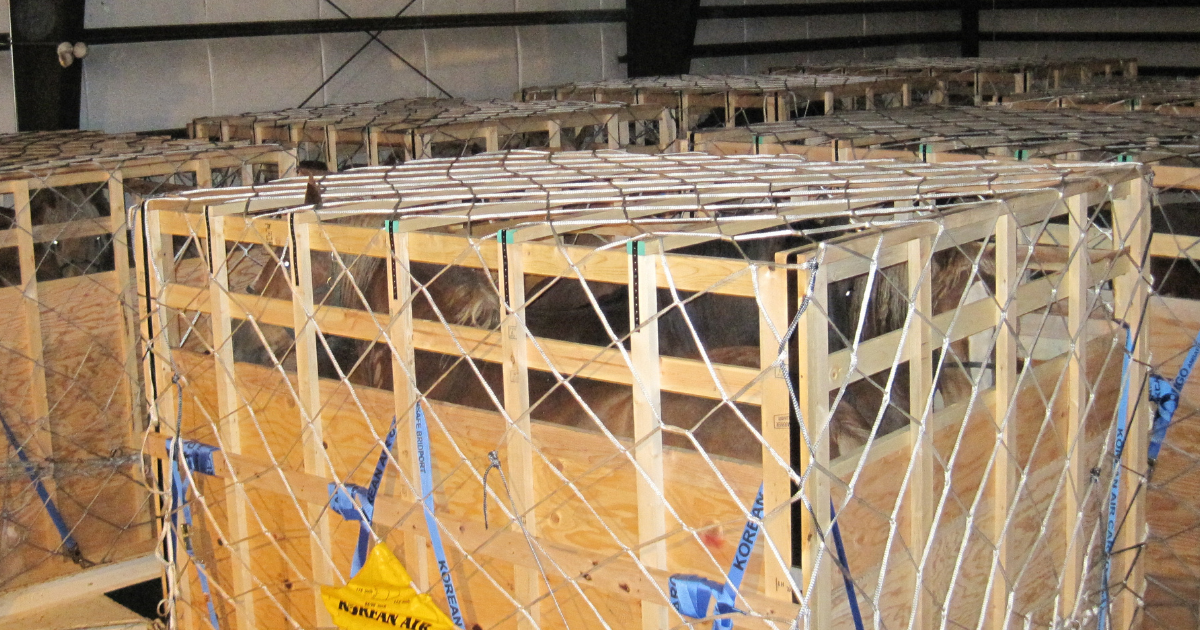This month, the Canadian agriculture industry released a draft of its revised code of practice for chickens and turkeys. The public is invited to comment on this draft for consideration before the final is published next year.
This code of practice matters. Chickens are by far the largest population of animals under human care—we killed more than 640 million of them in 2014—and their degree of suffering is arguably the worst of any factory farmed animal.
Yet, the government does not regulate on-farm conditions in Canada, choosing instead to fund and endorse the codes of practice. These codes of practice are the closest to on-farm regulations that we have.
The draft code of practice is badly deficient. It leaves out or scarcely addresses the most important animal welfare concerns. The interests, profits, and convenience of producers have evidently been the paramount concern.
Most alarmingly, the draft code totally fails to address genetic selection for rapid growth, which renders animals in systemic, chronic pain. The rapid growth of broiler chickens leads to lameness, heart failure, and compromised immunity. If you can take the time to leave just one comment, please comment on the need for runaway genetic selection to be curtailed.
Chickens and turkeys need our voices. Please participate in the public comment period before it closes. Below are some broad areas of concern worth mentioning, broken down by section to make commenting easier, although there are many sections to critique.
You can also view our full letter to the code development committee, which contains much more detail and citations, here.
“2.5 Physical Alterations and Bird Identification”
The draft code permits cutting off beaks, toes, spurs, combs, and snoods. Such amputations should be banned in favour of better management practices, including environmental enrichments, appropriate stocking density, and suitable and sufficient food. If amputations are permitted, painkillers should be required, and so should the use of the best available technology.
“3.4 Lighting”
Standard practice is to raise chickens with many hours of artificial light each day to keep the animals awake and eating, but keep the light intensity dim to prevent the animals from exerting too much energy. This near-constant dim lighting is associated with numerous welfare problems.
The draft code requires only four hours of dark per day. This is insufficient. In the European Union, at least six hours is required by law, although this too would be insufficient. As noted by NFACC’s Scientific Committee, mortality increases with each hour of light above 12 hours. Additionally, the lighting intensity required by the draft code is far too low; that is, the lights would be too dim.
“3.5 Stocking Densities”
The draft code allows chickens to be crowded to a density of up to 38 kg/m2 , which—assuming an average broiler size of approximately 2 kg—amounts to approximately 19 birds per square metre. The European Commission’s respected Scientific Committee on Animal Health and Animal Welfare (SCAHAW) recommends stocking densities of 25 kg/m2 or lower.
“4.2 Controlled Feeding and Watering for Broiler Breeders”
In order to prevent them from dropping dead, broiler chickens reared to reproductive age must be kept in a state of near-starvation. Feed restriction in broiler breeders causes stress, frustration, boredom, and chronic hunger.
The draft code acknowledges that “restricted feeding programs result in chronic hunger,” but rather than addressing this serious issue, it chalks up the “negative impact on bird welfare” as “unavoidable.”
This is unacceptable. It should be required, and it should be considered urgent, that at bare minimum birds are genetically capable of living to reproductive age without needing to be subjected to “extreme food restriction.”
“5.2 Disease Prevention”
The draft code does not require facilities to be cleaned between flocks. Leaving the excrement-covered litter in facilities is, unsurprisingly, associated with poor air quality. Specifically, air contains more dust, bacteria, fungal spores, and ammonia. Dirty litter and air causes eye, lung, and skin problems.
For reasons of animal welfare and food safety, producers should be required to clean out dirty facilities between flocks.
“7.3. Catching, Loading, and Unloading Procedures”
When chickens and turkeys reach slaughter weight, they are rounded up and packed into crates by unskilled workers. Workers carry three or four animals per hand, upside down, and throw them into transport crates. Rough handling is the norm. The confused, terrified birds experience extreme stress, and are frequently physically harmed with bruises, broken bones, dislocated joints, and other injuries.
In light of the dire welfare consequences associated with the manual catching techniques that are common practice in Canada, it is insufficient that the draft code essentially only requires “minimizing stress and injury” during catching. Specific guidelines and a structure that does not incentivize brutal handling habits should be set out and deemed required.
“Concluding Comments”
The draft code doesn’t address genetic selection for rapid growth. This is a paramount welfare concern. Not only does it lead to lameness, heart failure and compromised immunity, but breeding birds must necessarily be starved to stay alive.
Cages are not used to house broiler chickens in Canada because cages have historically caused breast blisters, which consumers find unattractive. However, cages are used in other parts of the world where it is more economically feasible for a variety of reasons, including changing cage technology. Canadian producers should be prohibited from adopting cage systems for broiler chickens.
So-called “required” practices are vague, vesting ultimate decision-making in the hands of producers. Phrases like “appropriate diet” and “appropriate environmental conditions” fail to communicate evidence-based best practice and guide behaviour. The code of practice should set out specific, measurable standards to promote producer accountability.
The draft code doesn’t address the rampant use of antibiotics in the poultry industry. Antibiotics should not be allowed for growth promotion or at sub-therapeutic levels. Instead of using antibiotics, producers should address the root of the problem: confining thousands of genetically immuno-compromised animals into crowded, filthy warehouses.
Image: Jo-Anne McArthur





